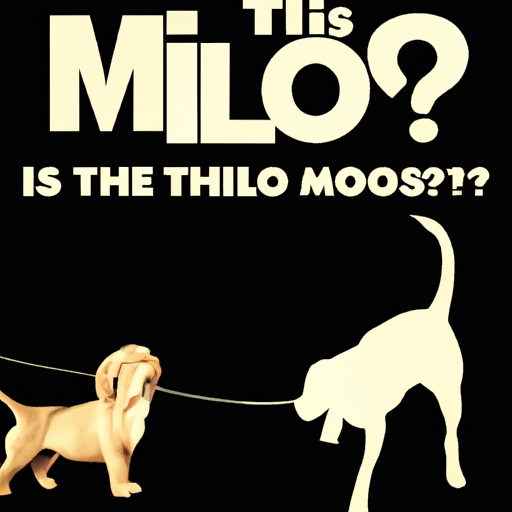As a caregiver, you are likely passionate about the welfare and safety of all creatures big and small, and this includes the animals used in entertainment. You might have watched or heard about the film “Milo and Otis”, a heartwarming tale about a dog and a cat on an adventure. But you may have also heard rumors about the safety of the animals during production. Today, we will delve into the controversy surrounding the film and answer the question: how many dogs died in Milo and Otis?
Understanding the Controversy
Firstly, let’s get a better understanding of the controversy. “Milo and Otis” is a 1986 Japanese film, originally titled “Koneko Monogatari: The Adventures of Chatran”. The film was later dubbed in English and released in the United States in 1989.
The film is a live-action adventure of a pug named Otis and a tabby cat named Milo. It’s a lighthearted film that gained popularity for its narrative style and the cute antics of its animal actors. However, it’s also been the subject of controversy due to allegations of animal abuse and rumors of multiple animal deaths during production.
Allegations and Rumors
The rumors of animal mistreatment began circulating not long after the film’s release. The film features numerous scenes of the animals in dangerous situations. These include a scene where Milo is thrown off a cliff and another where Otis fights a bear.
The allegations were further fueled by reports that no animals were harmed during the production of the film, a claim that many found hard to believe considering the perilous situations depicted in the film. The animal rights organization, PETA, was one of the critics, alleging that multiple animals were killed during the film’s production.
Unconfirmed Deaths
It’s important to note that the number of dogs who died during the production of Milo and Otis has never been officially confirmed. The film’s production company, Fuji Television Network, has denied allegations of animal abuse and deaths.
However, according to various sources:
- An article in the Australian newspaper The Sunday Mail reported in 1990 that more than 20 kittens died during production.
- The same article claimed that one pug was killed when it fought a bear, and another was injured after falling off a cliff.
- A 1986 review of the film in The New York Times mentioned a rumor that over 30 cats were used for the role of Milo due to the kittens growing too quickly during the long filming process.
This information, however, remains unverified and should be taken with a grain of salt.
The Lack of Oversight
The film’s production took place in Japan, where there were no animal welfare laws in the 1980s. The American Humane Association (AHA) monitors the treatment of animals in films produced in the United States, but they have no jurisdiction over foreign productions.
In the absence of any overseeing body, it’s difficult to verify or refute the allegations. It’s also worth noting that the film does not carry the standard “No animals were harmed” disclaimer usually associated with films involving animal actors.
FAQ Section
1. Was any action taken against the producers of Milo and Otis for alleged animal abuse?
No official action was taken. Although allegations were made, no concrete evidence was presented to support the claims.
2. Are there animal welfare laws in Japan now?
Yes, Japan has made significant strides in animal welfare laws in recent years. However, these laws were not in place during the filming of Milo and Otis.
3. Are there any organizations that monitor animal safety in foreign film productions today?
Yes, the American Humane Association now has a more global reach and collaborates with foreign film industries to ensure animal safety. But it’s important to remember that their influence is still limited.
In conclusion, while it’s unsettling to think of potential harm coming to animals during the production of a beloved film, the truth remains uncertain. As a caregiver, continue to advocate for the fair and humane treatment of all creatures in all aspects of life, including entertainment.



